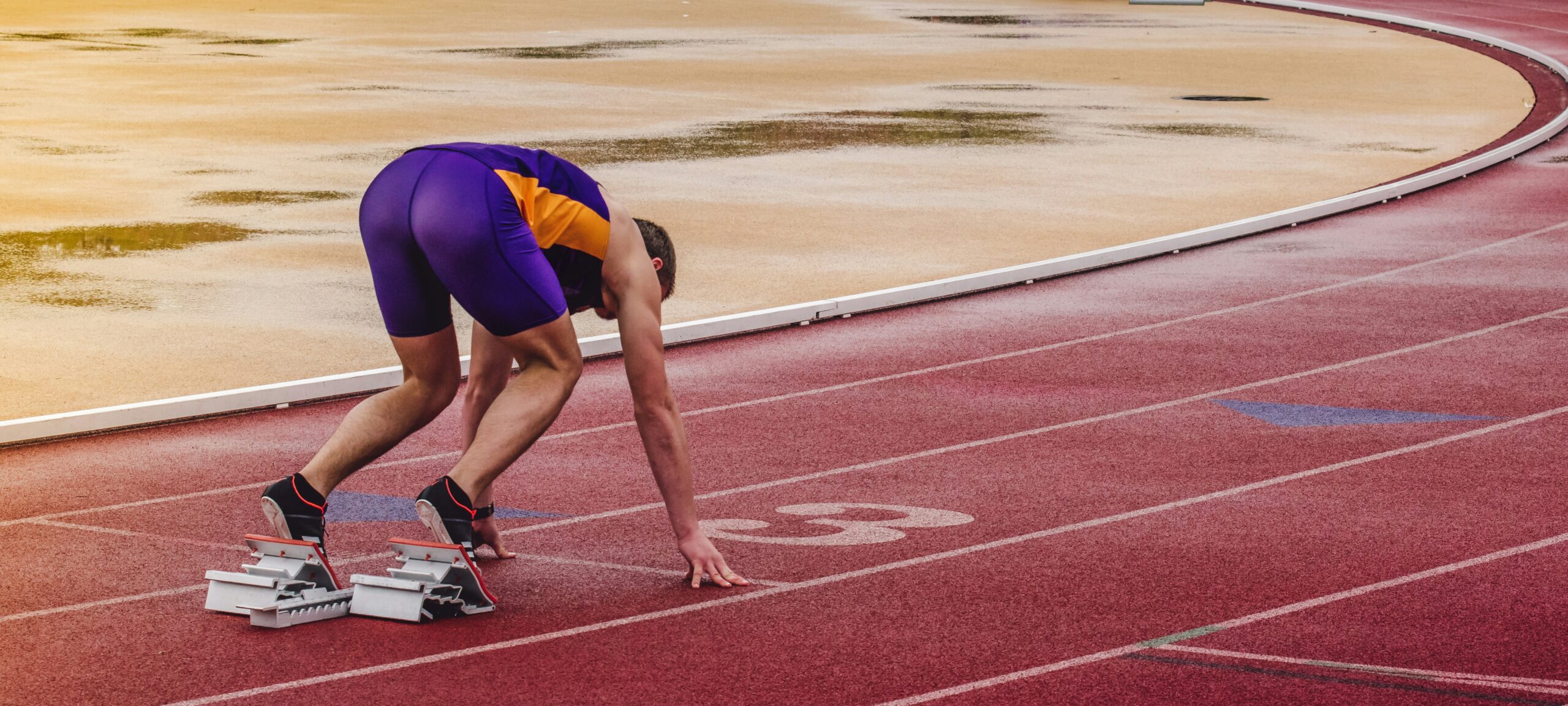Unlock the Must-Try Recovery Techniques That Prevent Injuries and Enhance Mobility
As the leaves turn and the air grows crisp, many athletes find themselves gearing up for a new season of sports, whether it’s football, basketball, or that seasonal obsession with pumpkin spice lattes. But before diving headfirst into the intensity of competition, there’s a crucial aspect that often gets overlooked: recovery. Recovery techniques are not just a luxury; they’re an absolute necessity for anyone looking to prevent injuries and maintain peak mobility. Trust me, I’ve seen too many talented athletes sidelined by avoidable injuries, and it always makes me wonder, “What if they had just taken a little more time to recover?”
The Importance of Recovery
Recovery is often misunderstood. Some folks think it’s just about kicking back with a bag of chips after a long workout. But recovery is a science—a complex interplay of physical rest, mental rejuvenation, and skill development. A significant number of studies suggest that incorporating effective recovery techniques can reduce injury rates and enhance overall performance. In fact, the National Athletic Trainers’ Association emphasizes that a well-structured recovery plan is just as vital as the training itself.
Let’s face it: injuries are the bane of every athlete’s existence. Whether it’s a sprained ankle from a poorly executed layup or a nagging back issue from neglecting proper stretching (raises hand in guilty acknowledgment), injuries can derail even the most promising careers. So, how do we avoid these pitfalls and keep moving smoothly? Let’s dive into the must-try recovery techniques that can transform your post-training routine.
1. Active Recovery: Moving While Resting
Active recovery is like a warm hug for your muscles. Instead of plopping down on the couch after a grueling workout (I know, it sounds tempting), consider engaging in low-intensity activities to help your body recover. This can include going for a light jog, cycling, or even swimming. I remember an old coach of mine once said, “You don’t just stop the engine; you let it idle.” And that mantra has stuck with me through the years.
Why Active Recovery Works
When you engage in active recovery, blood flow increases to your muscles, which helps to flush out toxins and deliver nutrients essential for healing. The benefits are numerous:
- Reduces muscle soreness
- Improves flexibility and mobility
- Facilitates faster recovery
Active recovery sessions should be less intense than regular workouts. Think of it as a gentle stroll rather than a sprint. Whether it’s yoga, a leisurely bike ride, or a slow-paced walk, the goal is to keep the body moving without adding stress.
2. Stretching: A Non-Negotiable
Now, let’s chat about stretching. I can almost hear the groans from those who think it’s just a waste of time. I used to be one of those people, rushing through my workouts, eager to hit the showers. But let me tell you, neglecting stretching is like skipping dessert at your favorite restaurant—just downright wrong.
Dynamic vs. Static Stretching
Stretching is divided into two categories: dynamic and static. Dynamic stretching involves moving as you stretch, which is particularly effective before workouts. Think of leg swings, arm circles, and walking lunges. On the other hand, static stretching—holding a stretch for 15-30 seconds—should be reserved for post-workout recovery. It’s crucial to target the muscle groups that you’ve worked during your training.
Some notable benefits of stretching include:
- Increased range of motion
- Improved muscle flexibility
- Enhanced performance
Incorporating both types of stretching into your routine can significantly enhance mobility and reduce the risk of injury. Just remember, it’s not a race; take your time and breathe through each stretch.
3. Foam Rolling: The Self-Massage Marvel
If you’ve ever met a foam roller, you know it can be a love-hate relationship. I remember the first time I tried foam rolling; I thought I was going to meet my maker. But oh, the benefits are worth the initial discomfort. Foam rolling, or self-myofascial release, helps to alleviate muscle tightness and improve blood circulation.
The Mechanics Behind Foam Rolling
When you roll a foam roller over your muscles, you’re essentially breaking up adhesions and scar tissue. It’s like giving your muscles a nice, deep massage without the hefty price tag. The key areas to focus on include:
- Quads
- Hamstrings
- Calves
- Back
Spend a few minutes on each area, applying pressure until you find those pesky knots. It may hurt (in a good way), but it’s a small price to pay for better mobility and recovery.
4. Hydration: The Unsung Hero
Let’s talk about something that’s often overlooked: hydration. It’s easy to forget to drink water when you’re caught up in the hustle and bustle of life. But trust me, staying hydrated is crucial for recovery and injury prevention. Water plays a vital role in nutrient transportation, temperature regulation, and muscle function.
How Much Should You Drink?
While the “8 glasses a day” rule is commonly mentioned, the truth is that hydration needs vary based on factors like activity level, body size, and climate. A good rule of thumb is to listen to your body. If you’re feeling thirsty, it’s time to hydrate. And let’s not forget about electrolytes—especially after those sweat-drenched workouts. Incorporating drinks with electrolytes can help replenish the minerals lost during exercise.
5. Nutrition: Fueling Recovery
I can’t stress enough how important nutrition is in recovery. Just like a car needs the right fuel to run efficiently, your body also requires proper nutrients to heal and repair. After all, you wouldn’t put regular gas in a Ferrari, would you?
The Power of Protein and Beyond
Protein is a key player in muscle recovery. Consuming protein-rich foods post-workout can help repair damaged muscle fibers. Aim for a balanced meal that includes:
- Lean protein (chicken, fish, tofu)
- Complex carbohydrates (quinoa, brown rice)
- Healthy fats (avocado, nuts)
Additionally, don’t forget about the power of antioxidants in fruits and vegetables, which can help reduce inflammation and promote healing. Think of them as your recovery superheroes, swooping in to save the day.
6. Sleep: The Magic Ingredient
If you’re not prioritizing sleep, you’re missing out on one of the most effective recovery techniques. Sleep is nature’s way of rebooting your body. It allows your muscles to recover, your mind to reset, and your energy levels to recharge.
Why Sleep Matters
During sleep, your body releases growth hormones that are essential for muscle repair. Studies suggest that athletes who get adequate sleep perform better, have quicker reaction times, and experience lower injury rates. So, if you’ve been burning the midnight oil binge-watching your favorite series, it’s time to hit the hay a little earlier. Your body will thank you.
7. Mindfulness and Mental Recovery
Recovery isn’t just physical; it’s mental too. Stress and anxiety can take a toll on your performance and recovery. Incorporating mindfulness techniques such as meditation, deep breathing exercises, or even journaling can help clear your mind and enhance your focus.
How to Get Started with Mindfulness
Mindfulness doesn’t have to be complicated. Start with just five minutes a day. Sit quietly, breathe deeply, and focus on the sensations in your body. You might be surprised at how just a few moments of mindfulness can make a world of difference in your overall recovery process.
8. Cold Therapy: Ice, Ice Baby
Ah, the age-old debate of hot vs. cold therapy. While both have their place, let’s focus on cold therapy for recovery. Ice baths might sound like a form of torture (and sometimes they feel like it), but they can significantly reduce inflammation and muscle soreness.
How to Utilize Cold Therapy
After an intense workout, consider taking an ice bath or applying ice packs to sore areas for about 15-20 minutes. Alternatively, you can try contrast baths—alternating between hot and cold water. It’s like a rollercoaster for your muscles, but trust me, your body will thank you later.
9. Compression Garments: A Trend Worth Trying
Compression garments have gained popularity among athletes for good reason. These snug-fitting apparel pieces are designed to improve blood circulation and reduce swelling. Many athletes swear by them, claiming they can help speed up recovery.
Choosing the Right Compression Gear
Whether it’s compression socks, sleeves, or full-body suits, the options are plentiful. The key is to choose garments that are comfortable and appropriate for your activity level. Slip them on after a workout, and you might just notice a difference in how you feel the next day.
10. Listen to Your Body
At the end of the day, the most important recovery technique is simple: listen to your body. It’s remarkable how often we ignore the signals our bodies send us. Whether it’s fatigue, pain, or just a need for a break, your body knows best. I can’t tell you how many times I’ve pushed through a workout only to regret it later.
Finding Balance
Finding the right balance between training and recovery is crucial. It’s not about being tough; it’s about being smart. Your body is your most valuable asset, so treat it well. Implementing a combination of these recovery techniques will not only reduce your risk of injury but will also enhance your overall performance.
Conclusion: The Road to Optimal Recovery
As we navigate the world of sports and fitness, it’s essential to prioritize recovery as much as training. By incorporating active recovery, stretching, foam rolling, hydration, nutrition, sleep, mindfulness, cold therapy, compression garments, and the most important rule of all—listening to your body—you can unlock a new level of performance. Remember, recovery is not a sign of weakness; it’s a sign of intelligence. So the next time you’re tempted to skip your recovery routine, think twice. After all, you wouldn’t want to be the athlete who could have been great but didn’t know how to take care of themselves.
So there you have it, a holistic approach to recovery that can help you dodge injuries and keep you mobile. Now, if you’ll excuse me, I have a foam roller and a comfy couch waiting for me. Cheers to better recovery!




